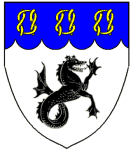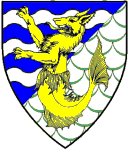| View previous topic :: View next topic |
| Author |
Message |
rogerbum
Joined: 21 Nov 2004
Posts: 5928
City/Region: Kenmore
State or Province: WA
C-Dory Year: 2008
C-Dory Model: 255 Tomcat
Vessel Name: Meant to be
Photos: SeaDNA
|
 Posted: Sun Dec 28, 2008 8:28 pm Post subject: Posted: Sun Dec 28, 2008 8:28 pm Post subject: |
 |
|
| Captains Cat wrote: | Type of prop has nothing to do with the calculation.
|
That's my point exactly. Since top speed is dependent on the type of prop you have, the "hull factor" by that formula HAS to include a contribution that is specific to the type of prop on the boat used to determine the max speed. That is, this formula to calculate the "hull factor" actually calculates something that is a combination of hull and prop.
| Captains Cat wrote: |
The calculation is useful if you have weitht, HP, and top speed. That will give you hull factor. Then, you can change the HP (or weight or both) to find out new top speed, if you change nothing else, or enter a top speed to find out how much HP you need to add or weight you need to shed to get there (top speed) changing nothing else.
If you change props, start all over again, and remember, it's all just an estimate!
Charlie |
I agree that the formula will likely give you an estimate of the new top speed if you change horse power or weight. However, the idea that this estimated "hull factor" is particularly useful in determining the prop to use on a different horsepower seems a bit off base to me since the prop that was (indirectly) incorporated into the original estimate of the "hull factor" is not part of the formula. Doesn't make physical sense to this scientist.
_________________
Roger on Meant to be |
|
| Back to top |
|
 |
NORO LIM
Joined: 24 Apr 2008
Posts: 888
City/Region: Olympia
State or Province: WA
C-Dory Year: 2006
C-Dory Model: 23 Venture
Vessel Name: NORO LIM (sold 12/12/14)
Photos: NORO LIM
|
 Posted: Sun Dec 28, 2008 9:15 pm Post subject: Posted: Sun Dec 28, 2008 9:15 pm Post subject: |
 |
|
I believe Rogerbum is exactly right. The only way this makes sense to me is if the "hull factor" is more like a combination of weight, design and theoretical speed (cruise? max? desired?). Using actual speed produced by one prop to calculate a "hull factor" for choosing another prop does not make sense. Put another way, "hull factor" implies something more or less immutable about the boat. Including the engine in the calculation seems equally hinky. Allowing the changes in the prop to change the "hull factor" really takes us in a meaningless circle.
Start with the experience of others, and then use trial and error.
_________________
Bill, Formerly on NORO LIM
2001 CD 16, 2001-2006
2006 CC 23, 2006-2014 |
|
| Back to top |
|
 |
Captains Cat
Joined: 03 Nov 2003
Posts: 7313
City/Region: Cod Creek>Potomac River>Chesapeake Bay
State or Province: VA
C-Dory Year: 2005
C-Dory Model: 22 Cruiser
Vessel Name: Captain's Choice II
Photos: Captain's Cat
|
 Posted: Sun Dec 28, 2008 9:45 pm Post subject: Posted: Sun Dec 28, 2008 9:45 pm Post subject: |
 |
|
Try looking at it this way. Keep the HP and weight constant, record the top speed. Get a hull factor.
Change the prop, keep the HP and weight constant. The top speed will change, and, if the formula is correct, the hull factor should be the same as before because the "hull" has not changed. If it isn't, then the formula is not correct.
The hull factor is the hull factor is the hull factor. The only variables in that formula are the HP, the weight and the top speed.
Charlie
_________________
CHARLIE and PENNY CBRAT #100
Captain's Cat II 2005 22 Cruiser
Thataway (2006 TC255 - Sold Aug 2013)
Captain's Cat (2006 TC255 - Sold January 2012)
Captain's Kitten (1995 CD 16 Angler- Sold June 2010)
Captain's Choice (1994 CD 22 Cruiser- Sold Jun 2007)
Potomac River/Chesapeake Bay
K4KBA |
|
| Back to top |
|
 |
NORO LIM
Joined: 24 Apr 2008
Posts: 888
City/Region: Olympia
State or Province: WA
C-Dory Year: 2006
C-Dory Model: 23 Venture
Vessel Name: NORO LIM (sold 12/12/14)
Photos: NORO LIM
|
 Posted: Sun Dec 28, 2008 9:55 pm Post subject: Posted: Sun Dec 28, 2008 9:55 pm Post subject: |
 |
|
| Maybe it's just semantics? I think it's a little deeper than that, but whatever . . . I believe there may be a more accurate description of the "factor" we're dealing with. If the hull, weight and engine do not vary, what we are calculating is the effect of changing the prop. That would be the "prop factor." |
|
| Back to top |
|
 |
rogerbum
Joined: 21 Nov 2004
Posts: 5928
City/Region: Kenmore
State or Province: WA
C-Dory Year: 2008
C-Dory Model: 255 Tomcat
Vessel Name: Meant to be
Photos: SeaDNA
|
 Posted: Sun Dec 28, 2008 9:59 pm Post subject: Posted: Sun Dec 28, 2008 9:59 pm Post subject: |
 |
|
| Captains Cat wrote: | Try looking at it this way. Keep the HP and weight constant, record the top speed. Get a hull factor.
Change the prop, keep the HP and weight constant. The top speed will change, and, if the formula is correct, the hull factor should be the same as before because the "hull" has not changed. If it isn't, then the formula is not correct.
Charlie |
Check it. The formula is not correct since it does not include the prop.
| Captains Cat wrote: |
The hull factor is the hull factor is the hull factor.
|
Yep. If the hull factor is truly a measure of the efficiency of the hull and not something that is calculated from ANY formula using only HP, top speed and weight UNLESS there is an implicit assumption that the prop is 100% efficient (or some other fixed efficiency) in transferring the horsepower to the forward motion of the boat.
| Captains Cat wrote: |
The only variables in that formula are the HP, the weight and the top speed.
Charlie |
That's the problem with that formula. Trust me on this Charlie. My point is that the only way that formula makes sense is if it assumes some fixed efficiency of the prop. However, since the intended use of that formula is to pick a prop AND since the "hull factors" are being calculated from props of unknown efficiency, the intended use is incompatible with the estimate. In fact, since Marvin used the hull factor and some other formula to determine that his prop slip is 0.05, I'd bet that the hull factor formula assumes 95% efficiency in the prop. |
|
| Back to top |
|
 |
marvin4239
Joined: 06 Feb 2007
Posts: 1165
City/Region: Jacksonville Florida/Wilmington NC
State or Province: FL
C-Dory Year: 2007
C-Dory Model: 22 Cruiser
Vessel Name: C-FLE II
Photos: C-FLE II
|
 Posted: Sun Dec 28, 2008 10:34 pm Post subject: Posted: Sun Dec 28, 2008 10:34 pm Post subject: |
 |
|
Actually I'm pretty confused still about what use the hull factor figure is. Yesterday when I was testing I recorded my MPH and fuel flow at RPMS from 2000 to 5500 every 500 rpms. My results at 4500 and 20 mph was 4.83 gallons per hour or 4.14 mpg. When I plug those numbers in to the formula it gives me a prop slip number of .02. At max RPM of 5500 I had 29 MPH with a prop slip of .05 and gals per hour of 7.79 and 3.59 mpg. This doesn't really address the hull factor but it seems to prove the prop slip formula is somewhat accurate.
_________________
marvin |
|
| Back to top |
|
 |
starcrafttom
Joined: 07 Nov 2003
Posts: 7935
City/Region: marysville
State or Province: WA
C-Dory Year: 1984
C-Dory Model: 27 Cruiser
Vessel Name: to be decided later
Photos: Susan E
|
 Posted: Sun Dec 28, 2008 11:55 pm Post subject: Posted: Sun Dec 28, 2008 11:55 pm Post subject: |
 |
|
I'm so staying out of this one. But I did ride on a Cape cruiser with a 200ph e-tec and it was really nice. I donít know what his fuel burn was a WOT but the boat was able to scoot right along at 30mph with the bow down, which made for a better ride. At 22-25 mph the motor was just purring along. I have always felt that 135 to 150 hp were too little for the c-25. Also as long as we are talking about variables of engines letís talk weight. As an example--- Honda 135 weights 485lbs while the Suzuki 140hp weights only 410 and the e-tec 200 weights 433, less than the smaller motors. Hell a 200 Honda weights 599lbs. 166 pounds more than the e-tec. My point is when you are figuring more hp you have to have the right weight, not a static weight regardless of the h.p.
Now correct me if I'm wrong but donít boats have a Hull factor at which point more hp. only burns fuel and does not generate more speed? Or is that only sail boats?
_________________
Thomas J Elliott
http://tomsfishinggear.blogspot.com/ |
|
| Back to top |
|
 |
Captains Cat
Joined: 03 Nov 2003
Posts: 7313
City/Region: Cod Creek>Potomac River>Chesapeake Bay
State or Province: VA
C-Dory Year: 2005
C-Dory Model: 22 Cruiser
Vessel Name: Captain's Choice II
Photos: Captain's Cat
|
 Posted: Mon Dec 29, 2008 7:22 am Post subject: Posted: Mon Dec 29, 2008 7:22 am Post subject: |
 |
|
I said...."If it isn't, then the formula is not correct. ".
Roger, at last we agree....
Charlie |
|
| Back to top |
|
 |
rogerbum
Joined: 21 Nov 2004
Posts: 5928
City/Region: Kenmore
State or Province: WA
C-Dory Year: 2008
C-Dory Model: 255 Tomcat
Vessel Name: Meant to be
Photos: SeaDNA
|
 Posted: Mon Dec 29, 2008 9:02 am Post subject: Posted: Mon Dec 29, 2008 9:02 am Post subject: |
 |
|
| starcrafttom wrote: | <stuff clipped>
Now correct me if I'm wrong but donít boats have a Hull factor at which point more hp. only burns fuel and does not generate more speed? Or is that only sail boats? |
That's only for displacement boats (a category into which most sailboats fits). For planing boats, more horsepower generally gives and increase in speed, the issue then becomes handling. With a C-Dory (and this is Bob's point), the hull doesn't handle well at above about 30kts so one could argue that the max horsepower that makes sense is the horsepower necessary to get to 30kts. |
|
| Back to top |
|
 |
Sea Wolf
Joined: 01 Nov 2003
Posts: 8650
City/Region: Redding
State or Province: CA
C-Dory Year: 1987
C-Dory Model: 22 Cruiser
Vessel Name: Sea Wolf
Photos: Sea Wolf
|
 Posted: Mon Dec 29, 2008 9:36 am Post subject: Posted: Mon Dec 29, 2008 9:36 am Post subject: |
 |
|
| starcrafttom wrote: | <Some discussion deleted>
Now correct me if I'm wrong but donít boats have a Hull factor at which point more hp. only burns fuel and does not generate more speed? Or is that only sail boats? |
The above is the generally agreed upon principle for displacement hulls, like heavy sailboats, trawlers, tugs, etc., and in fact, pretty much all boats except planing hulls and hydrofoils.
A displacement boat is trapped between it's bow wake and it's stern wake, and applying more power just makes the boat generate bigger waves fore and particularly aft, dragging a big stern wake along.
Generally, planing hulls have to be light in weight, have flatter bottoms, sharper chines, and enough horsepower to enable them to climb up onto and even over their bow waves, generating instead a wave from their flattened aft sections of their hulls as they plane along on the surface of the water. (This statement is a generalization and there are various exceptions to parts of it for some types of modified hull types and semi-displacement or semi-planing hulls.)
The formula for displacement hull speed (a generalization, again) is:
the square root of water line length times 1.34 = speed in knots,
and the maximum hull speed of a boat therefore goes up with the it's hull length accordingly, and longer boats are therefore inherently faster, all other factors considered constant.
Hope this is clear and straight-forward enough to be useful!
Joe.  
_________________
Sea Wolf, C-Brat #31
Lake Shasta, California
  
"Most of my money I spent on boats and women. The rest I squandered'. " -Annonymous |
|
| Back to top |
|
 |
stevej
Joined: 01 Nov 2003
Posts: 314
City/Region: Gaston
State or Province: OR
C-Dory Year: 1995
C-Dory Model: 25 Cruise Ship
Vessel Name: Shearwater
Photos: Shearwater
|
 Posted: Tue Dec 30, 2008 11:49 pm Post subject: Posted: Tue Dec 30, 2008 11:49 pm Post subject: |
 |
|
Eric, I have a 200 hp etec on Shearwater and looked at the Suzuki also.
I believe that etec has a slightly higher final drive ratio (numerically lower) than the suzuki. There are two schools of thought on this
1) you can swing a prop with a larger pitch or...
2) it helps to make up for the reduced torque of a 4-stroke at lower RPM VS a 2-stroke
Depending on which one of the above you buy into and for all it worth
I am running a 15X17 aluminum. 5400 RPM max and a little over 36 MPH at top end. I would estimate total weight around 5500 lbs when I got these numbers and feel that I am a little over propped when loaded. The etec has a max RPM of 5800 and 5600 is optimal
Also have a 15x15 SS that I have not had on the water yet but doubt if I see much of a change and may have it taken down to a 14 pitch.
Might give you a starting point
Been very impressed with my etec and weight on transom is about equal to a 150 4-stroke
stevej
_________________
1995 25' Cruise Ship #3 |
|
| Back to top |
|
 |
|
|
You cannot post new topics in this forum
You cannot reply to topics in this forum
You cannot edit your posts in this forum
You cannot delete your posts in this forum
You cannot vote in polls in this forum
You cannot attach files in this forum
You cannot download files in this forum
|
|

 Search
Search Private Messages
Private Messages Profile
Profile Log in
Log in Register
Register Help
Help





